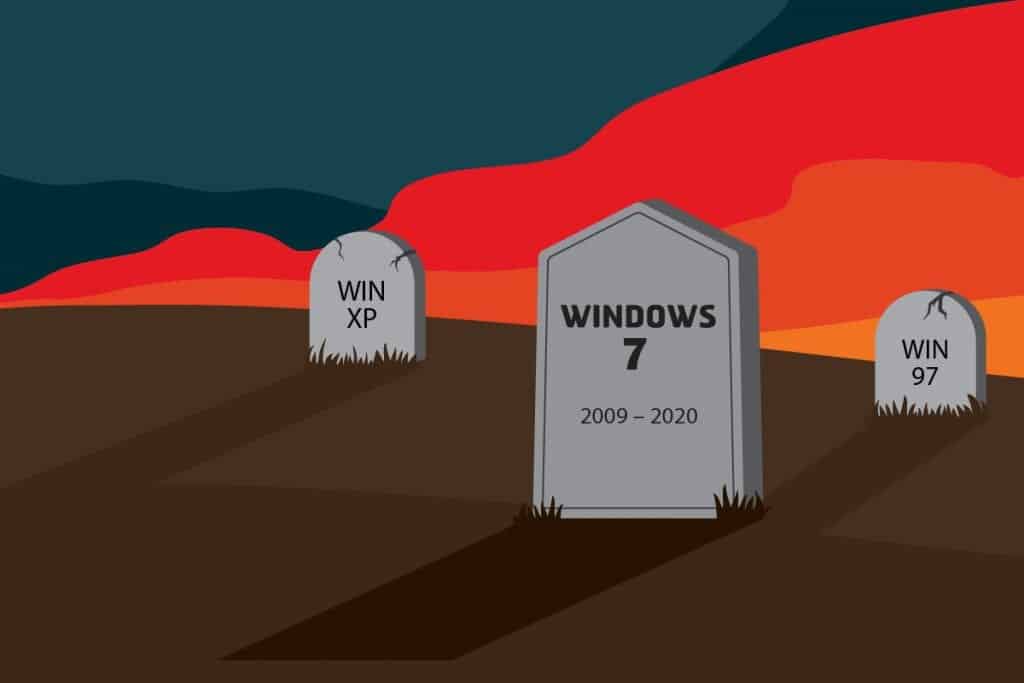Last week, we passed a milestone: less than one year left until the end of Windows 7. As of January 14, 2020, the legacy operating system will no longer receive extended support or software updates from Microsoft, meaning any machine still running it past that date will be susceptible to security vulnerabilities.
The number will surprise you, especially since mainstream support for Windows 7 ended in 2015. As of December 2018, Windows 7’s user share was still 42.8% of all Windows PC, with Windows 10 accounting for 45.5%. Even more shocking, that was the first month since its release three years ago that more computers were running on Windows 10 than its predecessor, Windows 7.
Although Microsoft has made clear its commitment to moving on from Windows 7, millions of users still rely on it. In some cases, legacy accounting or data management software will only run on Windows 7. In others, financial concerns may prevent a business from upgrading its operating systems to Windows 10—or purchasing new computers altogether.
Still, others choose to stick with the tried and true option of Windows 7, preferring to risk a cybersecurity threat instead of undertaking the expense and effort required to update and upgrade computers while bringing employees up to speed with new operating systems.
As you begin implementing your budget for 2019 or look ahead to a new fiscal year, now’s the time to consider the cost of upgrading or replacing any desktop or laptop running Windows 7. Because of the early end-of-life date in 2020, any upgrades or replacements should be in place for several months before the January 14 end-of-life date. That means you’ll have time to work with a trusted IT provider to transition smoothly and avoid any downtime or interruptions.
That depends on the age of your desktop or laptop computer. The general rule of thumb for business machines is that that anything more than three years old should probably be replaced; if a computer is less than two years old, it’s probably capable of handling an upgrade to Windows 10. This scenario will differ from business to business, with several factors—computing speed needs, graphic capabilities, hard drive requirements, and more—coming into play.
When Microsoft ended support for its popular Windows XP operating system in 2014, it affected 40% of the world’s estimated one billion computers. But change arrived slowly, even with a long rollout and multiple security announcements. Four years later, around 5% of the world’s computers still use Windows XP, even though several ransomware attacks (most notably WannaCry) have targeted legacy systems still running XP. As hackers realize how many potential cybercrime victims are still running Windows 7 beyond January 14, 2020, they’re sure to turn their attention in that direction.
Although Windows 10 has finally overtaken Windows 7 as the most popular OS, 37% of the world’s computers are still relying on the older version. Navigating the impending end-of-life deadline for Windows 7 will require a smart strategy that takes cost, time, and security into consideration. Conducting an assessment of your company’s current infrastructure is the key first step to identifying any coming vulnerabilities.
If you have questions or need more information about Windows 7’s coming end of life, contact CMIT Solutions today. We’ve helped our clients navigate situations just like this one, and we understand what businesses need to survive and thrive in today’s challenging cybersecurity environment. CMIT provides responsive, professional support that ensures efficient, safe, and reliable IT operations.

